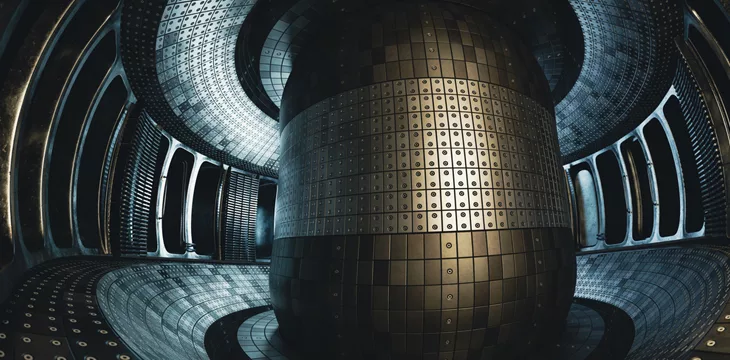As the world moves toward clean energy sources, Princeton University researchers have completed research related to artificial intelligence (AI) and fusion energy.
According to a CNN report, the research involves using AI to predict real-time instabilities associated with attempts to achieve fusion energy. Although it has been touted as a solution to the climate crisis, scientists have been unable to achieve sustained fusion energy due to the complexities involved in the process.
Several strategies have been undertaken to obtain fusion energy, but the most common and plausible strategy is to use hydrogen transformation as fuel and raise the temperature to high levels in a donut-shaped machine known as a tokamak to generate plasma. Nuclear researchers face an uphill climb in containing the plasma within the confines of the device’s magnetic field, given the device’s tearing properties.
“This is one of the big obstacles. That means there will be outages, and we want all of our reactors to operate 24/7 for years without any problems,” said Egemen Koleman, a professor in the Department of Mechanical and Aerospace Engineering at Princeton University and an author on the project. “And these types of outages and instability can be very problematic, so developing solutions like this increases our confidence that these machines can run without problems.”
The team’s AI model demonstrated advanced capabilities for predicting plasma ruptures in advance, a key element in sustaining nuclear fusion reactions. According to the research paper, the system provided warning of potential plasma damage 300 milliseconds before the event occurred.
“This experiment provides a foundation for using AI to address the wide range of plasma instabilities that have long hindered nuclear fusion energy,” Princeton University officials said.
Previous research involving nuclear fission has shown promise, with one UK-based experiment recording 69 megajoules of fusion energy over five seconds. The energy generated could power more than 12,000 homes, but the study used more energy than it generated.
To make fusion energy commercially viable, researchers are pinning their hopes on integration with emerging technologies, with optimists predicting a mainstream launch in 2040.
Nuclear power and AI
While scientists are harnessing AI to extend the duration of nuclear fusion reactions, several tech companies are keen to use the energy source to power their AI ambitions.
Microsoft (NASDAQ: MSFT) job listings reveal the tech giant’s plans to build small modular nuclear reactors (SMRs) as an alternative energy source for its AI goals. The transition to SMR will not be an easy task for Microsoft due to the scarcity of advanced uranium fuel and the lack of SMR designs.
British authorities are pushing for strict AI regulations similar to the guardrails for nuclear energy and are calling for an interventionist approach.
“What really concerns me is that there is no regulation of large-scale language models that can be applied to different AI tools – how to build them, how to manage them, how to control them,” he said. Labor MP Lucy Powell June 2023.
For artificial intelligence (AI) to function properly within the law and succeed in the face of growing challenges, it must integrate enterprise blockchain systems that ensure data input quality and ownership. This helps keep your data safe while ensuring immutability. data. Check out CoinGeek’s coverage To learn more about this new technology Why enterprise blockchain will become the backbone of AI.
Watch: Turning AI into ROI
width=”560″ height=”315″frameborder=”0″allowfullscreen=”allowfullscreen”>
Are you new to blockchain? To learn more about blockchain technology, check out CoinGeek’s Blockchain for Beginners section, our ultimate resource guide.

